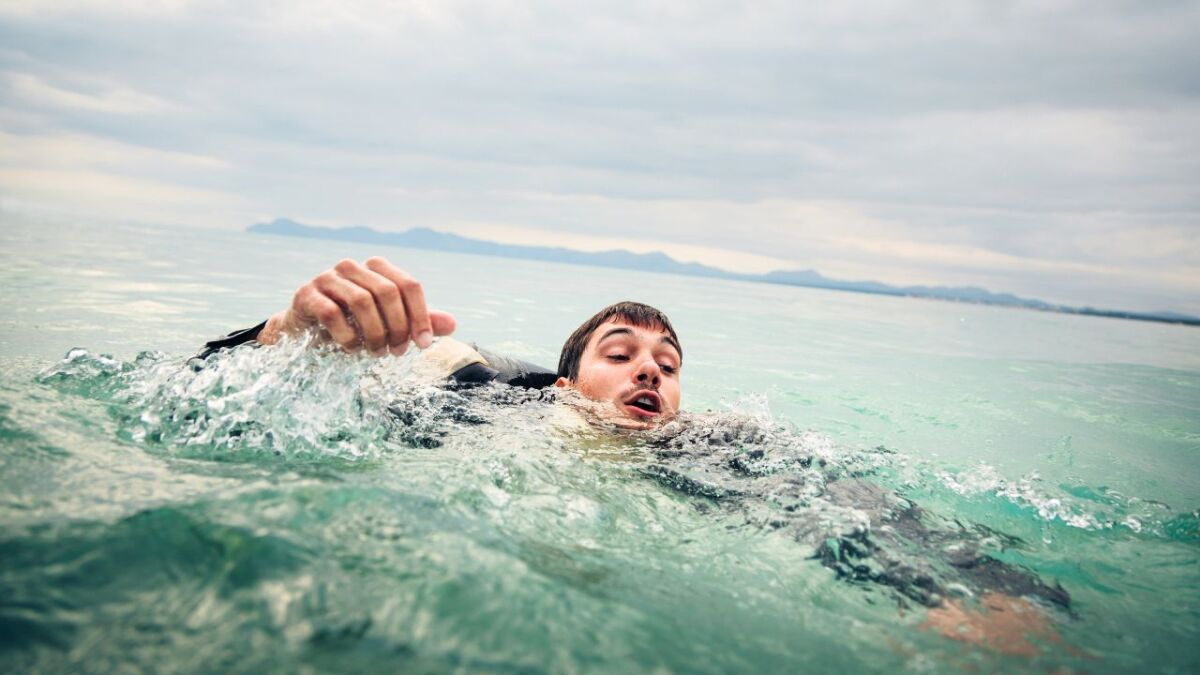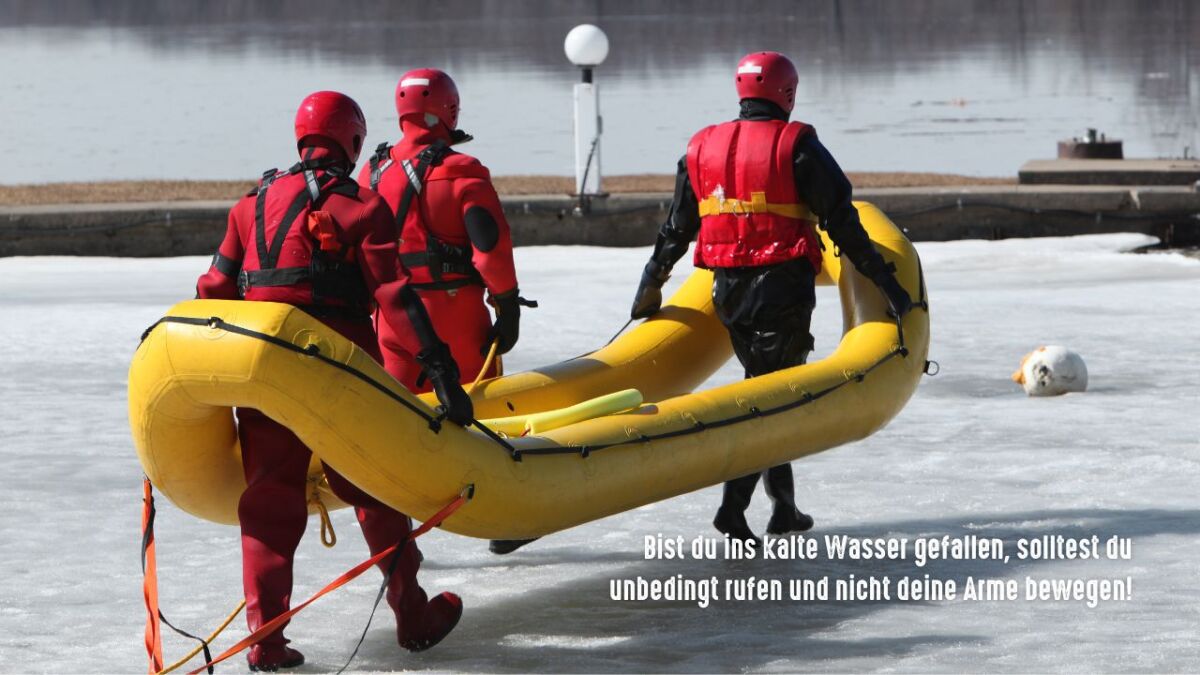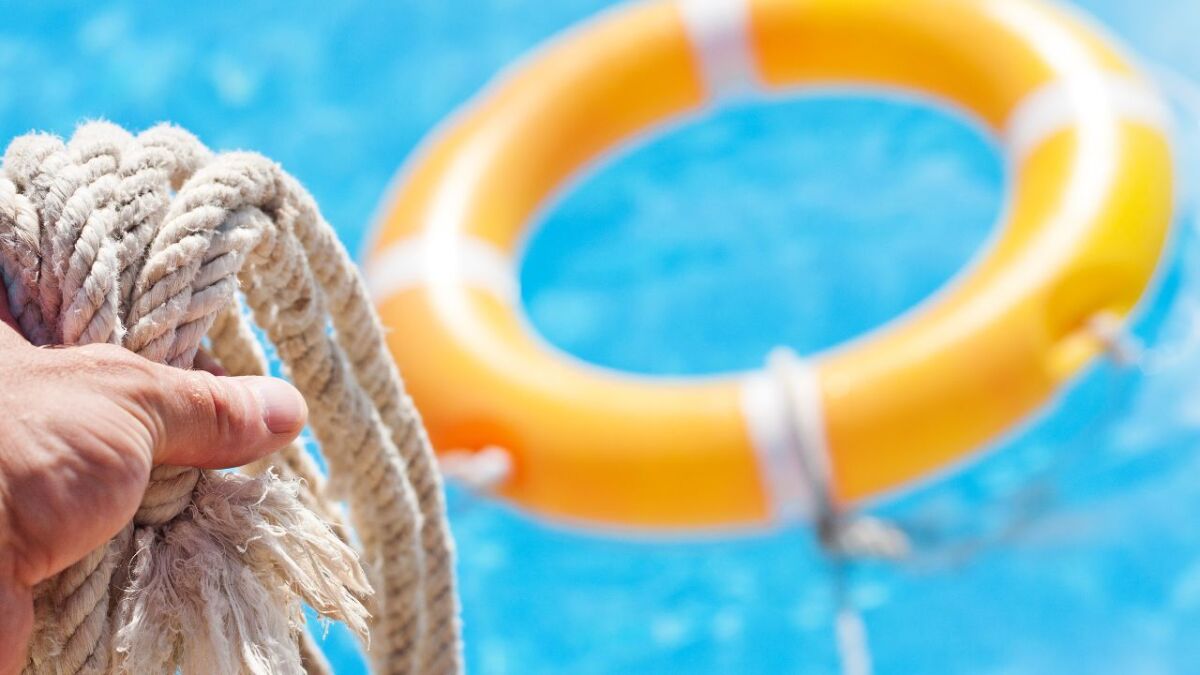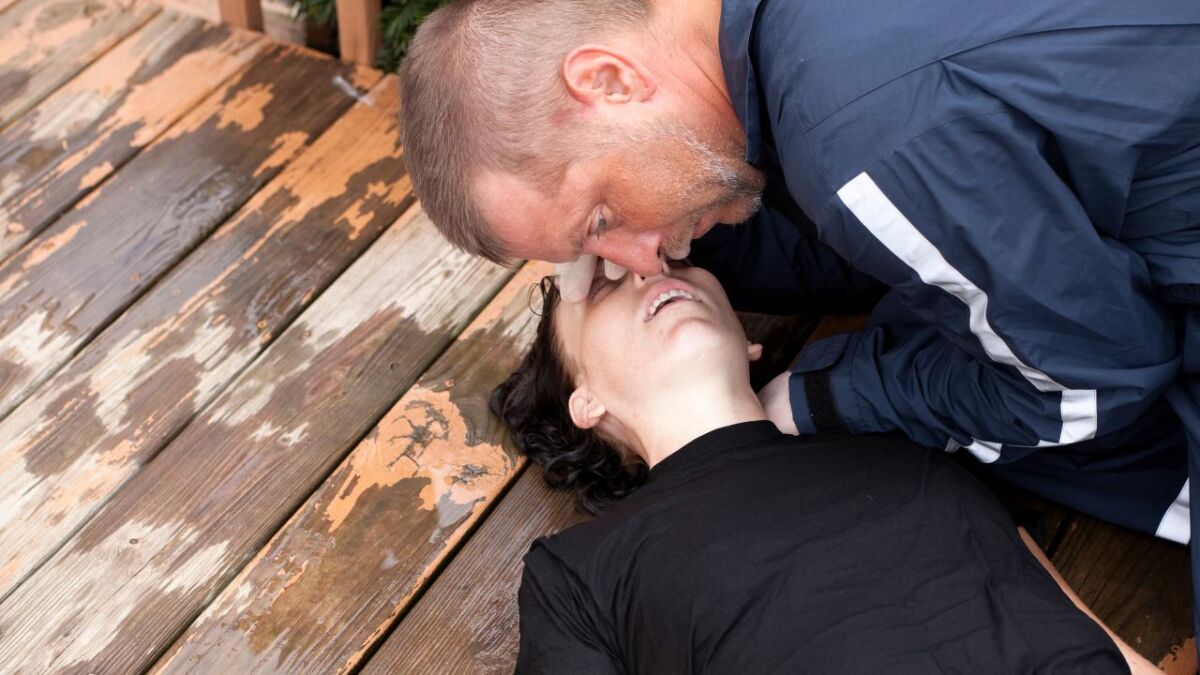
How to survive a plunge into cold water?
👉 The key facts from this guide
- A plunge into cold water can lead to a cold shock, which severely affects your breathing and circulation.
- Swimming failure is one of the main dangers after a cold water immersion, as the cold affects your muscles.
- Hypothermia (undercooling) only occurs after a long time in cold water and can lead to unconsciousness and drowning.
- During the rescue phase, you must remain calm and do not try to draw attention to yourself through frantic movements.
- The proper treatment after being rescued from cold water involves slow warming and seeking medical assistance.
- Preventive measures such as wearing a life jacket and warm clothing can significantly improve your chances of survival.
A plunge into cold water is a very dangerous situation that can trigger panic.
Furthermore, such a situation endangers your life because you can die from hypothermia.
Ideally, you should immediately rescue yourself to land and warm up so that your body functions properly. However, this is not as easy as it sounds in some situations.
In this guide, you will learn what to do if you fall into cold water.
If you spend a lot of time in nature, you surely know how cold water can be
Even in summer, mountain lakes and other bodies of water have temperatures between 10 and 12 degrees Celsius.
A plunge into water of this cold can kill you within minutes. It doesn't even take such low temperatures.

Even temperatures below 20 degrees are initially considered cold and cause changes in our body's reactions. Because prolonged exposure to water also leads to cooling and negative effects on the body. However, this is more likely to affect shipwreck victims who are waiting for rescue in the sea.
Now you may say that you have been in the water at lower temperatures, and it was not a problem.
I believe you, no doubt about it.
The key factor here is mental preparation for the cold and, on the other side, the shock of an involuntary plunge into icy cold water.
The fact is that the shock even puts experienced swimmers in such a state of emergency that everything they have learned fails. It triggers an uncontrollable state that must be overcome first.
Subsequently, hypothermia (undercooling) is often not the reason for death, but rather the inability to swim due to impaired muscles. More on that later.
In general, the time after the fall can be divided into four phases.
Once you are aware of these four phases, you can drastically increase your chances of survival and know how to behave in an extreme situation.
In the following, I will explain the four stages and how to prepare for them.
1. Stage: Cold Shock Response
The reason for the shock is the sudden cold stimulus on the skin. This is not only dangerous for older people, but also for children and young adults.
The reactions of the circulatory and respiratory system are dangerous. You can no longer control your breathing here and quickly take massive breaths. In addition, your heart is heavily burdened.
The reaction occurs immediately and can last up to 5 minutes. In one breath, you can take up to 3 liters of volume and transition into hyperventilation (accelerated breathing). You breathe four times faster than at rest, which can lead to panic and confusion.
You can imagine that there is a great risk of inhaling water here. The amount of water in the lungs that can lead to drowning is minimal, only 0.25 to 0.5 liters can be life-threatening.
In addition, there is increased blood pressure and heart rate, which in the worst case can lead to stroke or heart attack.
Read here: How to deal with panic in emergencies
What should I do in case of a fall into cold water?
As mentioned above, the reaction to falling into cold water is largely uncontrolled. However, there are some preventative measures that can help you overcome this reaction faster.
Your physical condition plays a major role in this! If you are physically fit, the shock will not be as severe and heart problems are less likely.
A life jacket is worth its weight in gold in such a situation! It keeps your head above water and prevents you from drowning.
However, we will not always have a life jacket with us, especially in survival situations where this is unlikely.
If you find yourself in a situation where you could fall into cold water, warm clothing can also help. The less direct contact the water has with your skin, the less severe the cold shock will be.
Once you have survived the shock, the most important thing is to remain calm and plan your next steps. This brings us to the next stage.
Stage 2: Swimming Failure
As you have read above, swimming failure is one of the main reasons for drowning when falling into cold water.
After a while, the muscles, especially in the legs and arms, begin to cool down. This significantly limits your motor skills, and your strength can decrease by 50-80% just a few minutes after entering the water.
Without a life jacket, you must keep yourself afloat by swimming. This causes your body temperature to drop even faster and, due to the inefficiency of your muscles, you switch from a horizontal to a vertical position.
You try to counteract this, make even more frantic movements, your breathing quickens, and ultimately, you can no longer keep your head above water.
This is definitely a horror scenario that I never want to experience. However, there are some things you can do to avoid reaching this point.
How do I behave correctly to prevent drowning?
I cannot stress this enough, but staying calm is key! If you panic, your chances of survival decrease rapidly.
Breathe evenly, deeply, and slowly. I recommend taking cold showers occasionally to learn how to deal with freezing and your breathing. It's wonderful how conscious breathing can change an initially uncomfortable situation.

Here, however, it's not just uncomfortable, it's about your survival. First, it's important to know that while swimming can generate warmth for a short time, it actually cools you down eventually.
If there is no floating object or even the shore in your immediate surroundings, you should definitely avoid swimming. Furthermore, there may still be air trapped in your clothing, which keeps you afloat. This buoyancy has saved many people's lives.
Therefore, try to drift as much as possible. Your chances of survival are greatest this way, and you can wait for rescue.
It's essential not to get rid of your clothing under any circumstances. Even if it's wet, it protects you from direct contact with the cold water. The exception is heavy clothing that pulls you down.
3rd stage: Hypothermia
For this stage, you have to be in cold water for a longer period of time - depending on the temperature. Important organs are cooled down here and can no longer function properly. Unconsciousness and drowning are the consequences.
Several factors play a role, including gender (women cool down faster), clothing, and fitness.
How should I behave?
If you haven't already put on appropriate equipment beforehand, you can only adhere to the above-mentioned behavioral tips here.
4. Rescue Phase
If you could not rescue yourself from the water, you are dependent on the help of others.
But even if the rescue is imminent, there are still some dangers. Because 43% of people who drowned in cold water die 2 meters away from their rescue (source).
If the person attracts attention by waving, they waste valuable energy. Your strength is lost, air escapes from your clothing, and you sink.
Therefore, you should definitely call out, not move your arms!
In addition, you must not relax too early. Stress hormones can keep you alive, and premature relaxation can have fatal consequences.
But even during the rescue, things can go wrong. A horizontal position is life-saving because it keeps the airways mostly above water.
Finally, it is incredibly important not to lose hope!
There are several cases of people who were rescued from almost impossible situations due to their will to survive.

How can you help a person who has fallen into the water?
First, you should stay in contact with the person and try to calm them down. Encourage them to float and let them know that you're getting help.
1. Pull the person to shore
Look for a long object, such as a branch or a rope, and try to reach the person with it. Ideally, this allows you to pull them out of the water.
2. Throw an object
If you have a rope or even a life ring nearby, you can throw it out to the person.
Be aware that the person's strength is already significantly weakened. Therefore, I recommend tying a loop in the rope. This way, the person in the water can put the rope under their arms, and you can pull them out.
Even balls or empty plastic bottles can make a difference and keep the person above water.

3. Go into the water yourself
This action must be carefully considered!
If you also become a person in need, no one will be helped. If you believe it is safe enough, you can try to float towards the other person. Ideally, you have some form of floating device as an aid.
If you are on the ice, you should definitely lie on your stomach and crawl to the hole. This way, the weight is distributed more evenly and the risk of breaking through is reduced.
4. Resuscitation
In the worst case, you may have to resuscitate the person after or during the rescue. The earlier you start, the greater the chances of survival.
Firstly, you should check the airways, breathing, and circulation. Speak to the person and gently shake their shoulder. If they are unresponsive and not breathing, the airways must be cleared. Ideally, you should call for an ambulance and delegate someone else to do this meanwhile.
Next, you must immediately begin resuscitation.
If the person is still breathing but unresponsive, you should place them in the recovery position. This is not a substitute for a first aid course, and I highly recommend that you refresh or take one if you haven't already done so.

Things not to do when trying to save someone
- Do not jump in to try to save someone, as this is usually not a good idea and can also put you in danger.
- Do not attempt to remove your clothing in the water. Clothing can actually keep you warm in the water (on land is a different story) and help you swim, as it traps air within the fabric.
- Do not give a hypothermia person alcohol. Alcohol dilates the veins and rapidly causes the body to lose heat.
- Do not heat the arms and legs too quickly. This can push cold blood from the limbs to the heart, which can lower the body's core temperature.
- Do not massage the victim and do not give them a hot bath. Cardiac arrest is a common consequence of hypothermia, and rough movements of the victim can be a catalyst for this condition.
How to treat someone who has fallen into cold water?
Warm yourself or the person up: take off wet clothes and warm up slowly with dry blankets. Remember not to warm up too quickly, as you do not know whether you are hypothermia or not – and this can be dangerous.
Any victim pulled from cold water should be treated for hypothermia.
Get the help of a trained medical professional or take them immediately to a medical facility.
Symptoms of hypothermia can include:
- Shivering
- Confusion
- Blue skin
- Weak pulse
- Difficulty breathing
Treating Hyperthermia
- Be gentle and handle the person's body with care as they are in a delicate state
- Take the victim to a warm place, but do not apply heat directly to the body
- Remove wet clothing, keep body movements to a minimum
- Give the person dry clothing and cover them with a blanket
- Give the person warm (not hot!) fluids
Conclusion: Falling into cold water can be a traumatic experience
It is important to know how to survive if you find yourself in this situation. Nobody expects to fall into cold water, but it can happen to anyone.
Did you know that hypothermia sets in slowly and does not statistically account for the primary cause of death from cold water immersion?
The inability to swim is much more dangerous. Therefore, wearing a life jacket in risky situations is worth considering.
Furthermore, in such a guide, it is always easier said than done. Especially in such an extreme situation, it may seem difficult to follow or even remember certain rules of behavior.
However, sometimes you don't even realize what gets stored in our unconscious mind and then retrieved in extreme situations. Our mind is truly outstanding.
If you want to continue exploring this topic, consciously immerse yourself in cold water and observe your reaction.

The water doesn't have to be icy cold. Even at 25 degrees, breathing changes and the body slowly cools down. Always be aware of yourself and don't push yourself unnecessarily beyond your limits.
And lastly, I hope you never find yourself in such a situation - neither as a victim nor as a helper.
Take care of yourself!

Sources for the guide
https://thesurvivaldoctor.com/how-to-survive-in-cold-water
https://www.rish.de/download/kalteswasser.pdf
https://www.deutsche-flagge.de/de/redaktion/dokumente/dokumente-sonstige/sturz-ins-kalte-wasser.pdf
https://www.rudern.de/news/2014/sicherheit-empfehlungen-und-hinweise-bei-kaltem-wasser-zur-unterkuehlung-hypothermie

Author of the guide
Martin Gebhardt
Hey, I'm Martin. On my blog, you will learn the basics and numerous details about living in the wild. I think survival, bushcraft and the good life in nature are the keys to happiness. Find me here on Instagram or on YouTube. You can find more about my mission on the About Me page.
Was this guide helpful?
17 people found this guide helpful.
5.00 out of 5 points (17 Ratings)
Comments (0)
This post may contain affiliate links. So if you click on the links and make a purchase, I will receive a small commission at no additional cost to you. Click here, to learn more about it.


